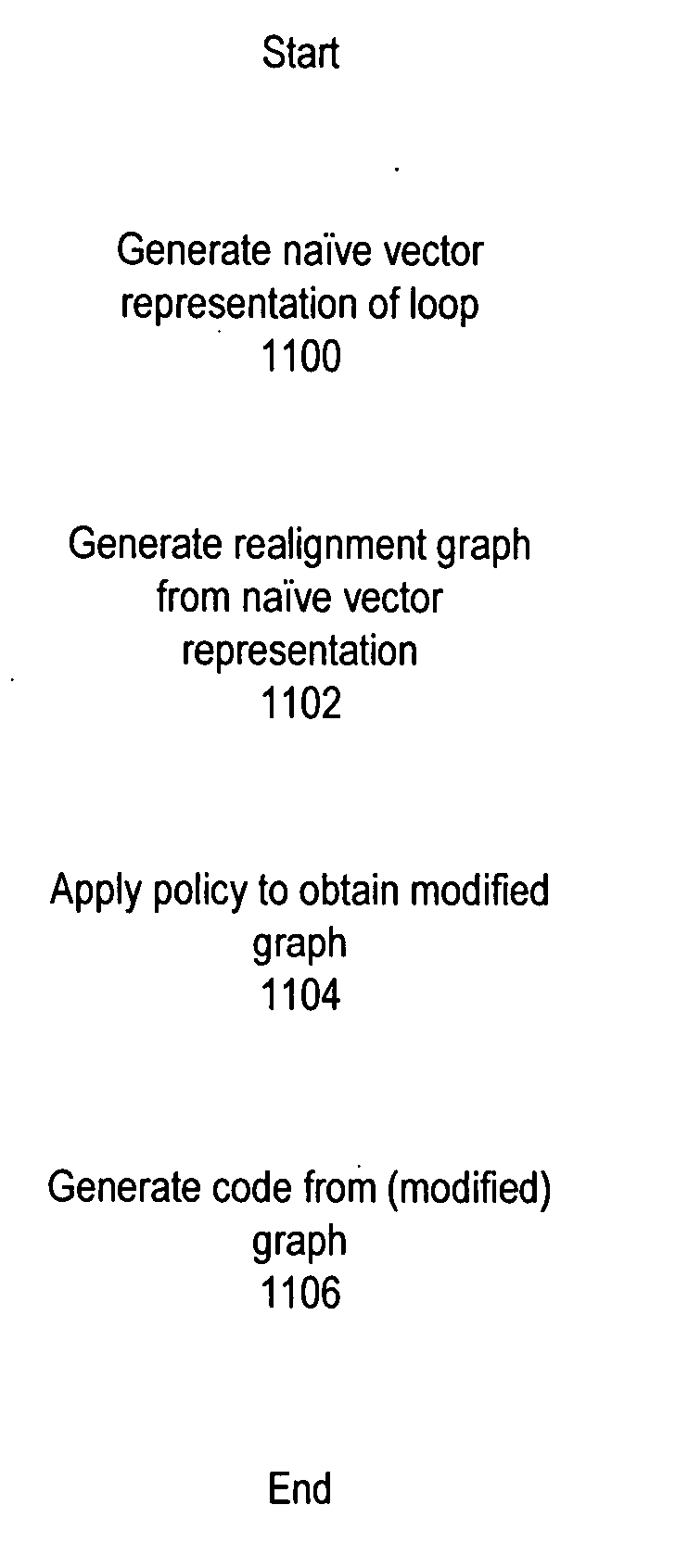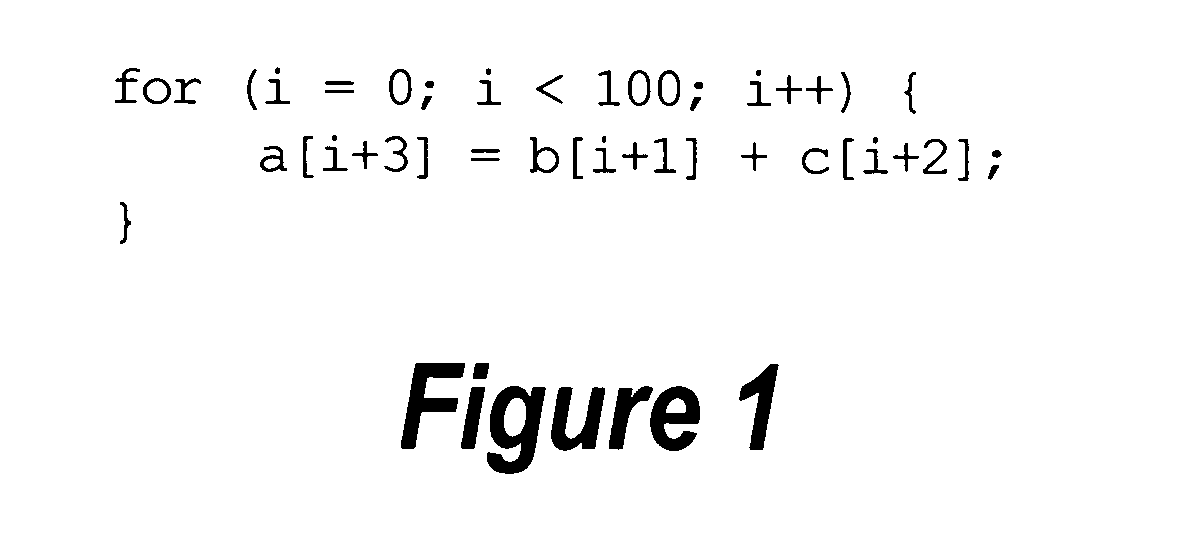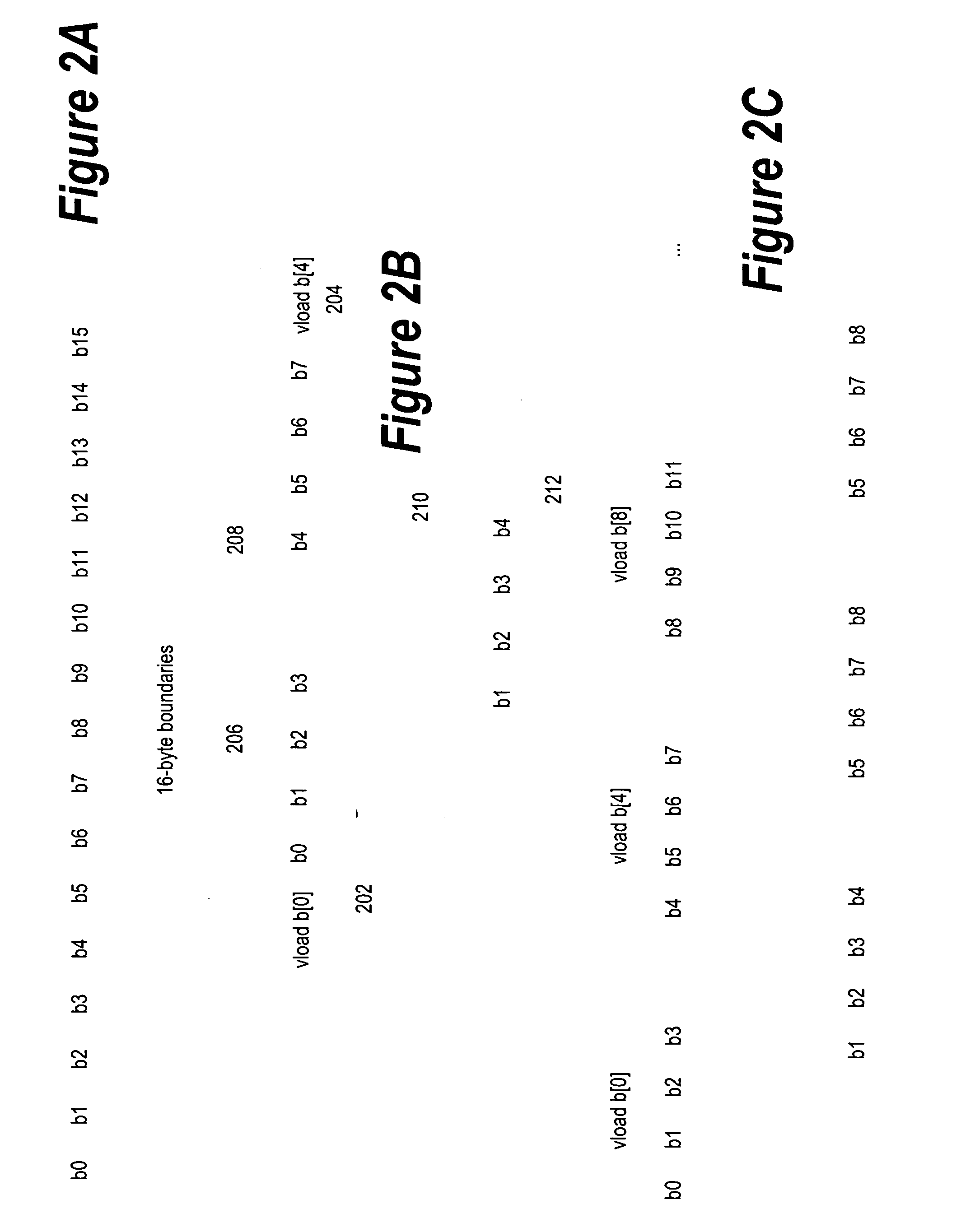Framework for efficient code generation using loop peeling for SIMD loop code with multiple misaligned statements
a loop code and loop peeling technology, applied in the field of loop peeling for loop code with multiple misaligned statements, can solve the problems of time-consuming and error-prone explicit vector programming, alignment constraints of simd memory units present a great challenge to automatic simdization, and the alignment constraints of simd memory units are difficult to solve, so as to reduce the computational overhead and achieve no additional computational overhead
- Summary
- Abstract
- Description
- Claims
- Application Information
AI Technical Summary
Benefits of technology
Problems solved by technology
Method used
Image
Examples
Embodiment Construction
[0034] The following is intended to provide a detailed description of an example of the invention and should not be taken to be limiting of the invention itself. Rather, any number of variations may fall within the scope of the invention, which is defined in the claims following the description.
1. Overview
[0035] A preferred embodiment of the present invention provides a method, computer program product, and data processing system of general application for simdizing loops with misaligned stride-one memory references for SIMD architectures with alignment constraints. This is achieved by automatically generating data reorganization instructions during the simdization to align data in registers.
[0036] Using the array reference b[i+1] as an example, FIGS. 2A-2C illustrate the basic mechanism to implement a misaligned load on a typical SIMD unit with alignment constraints in accordance with a preferred embodiment of the present invention. FIG. 2A shows an array b[] consisting of elem...
PUM
 Login to View More
Login to View More Abstract
Description
Claims
Application Information
 Login to View More
Login to View More - R&D
- Intellectual Property
- Life Sciences
- Materials
- Tech Scout
- Unparalleled Data Quality
- Higher Quality Content
- 60% Fewer Hallucinations
Browse by: Latest US Patents, China's latest patents, Technical Efficacy Thesaurus, Application Domain, Technology Topic, Popular Technical Reports.
© 2025 PatSnap. All rights reserved.Legal|Privacy policy|Modern Slavery Act Transparency Statement|Sitemap|About US| Contact US: help@patsnap.com



